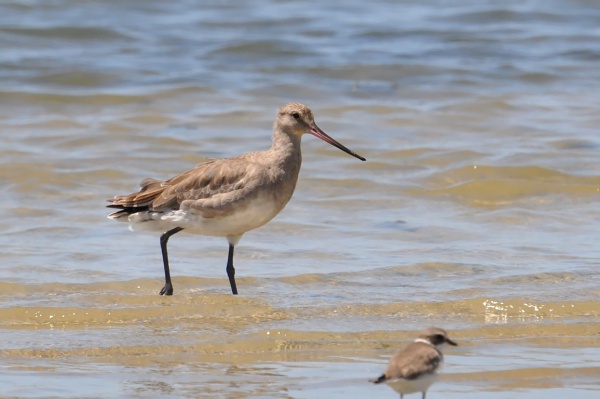Facts About Hudsonian godwit
The Hudsonian godwit is a captivating large shorebird belonging to the sandpiper family, Scolopacidae. You can identify it by its long, dark legs and a slightly upturned, long pink bill. Its upper body is mottled brown, while its underparts display a striking chestnut coloration. The bird also features a black tail and a white rump. In flight, its black wing linings and bluish-grey legs and feet become apparent.
The bird's scientific name is Limosa haemastica. "Limosa" means "muddy" in Latin, reflecting its preferred habitat, and "haemastica" means "bloody" in Ancient Greek, likely referring to its chestnut underparts. It was formerly known as the red-breasted godwit. The name "godwit" is believed to mimic the bird's call and has been in use since the 15th century.
Hudsonian godwits breed in the far north, near the tree line in northwestern Canada and Alaska, as well as along the shores of Hudson Bay. They construct their nests on the ground in concealed, marshy areas. The female typically lays four olive-buff eggs with darker spots, and both parents share the incubation duties, which last about 22 days. Once hatched, the young birds are tended by both parents and are capable of flying and foraging for their own food within a month.
During migration season, these birds travel to South America. They often congregate at James Bay before embarking on their lengthy journey south. Some birds may even complete the migration without stopping, provided the weather conditions are favorable. Occasionally, Hudsonian godwits are spotted in Europe, Australia, or South Africa. From late July to early August, they can be seen in large numbers along the east coast of North America during their migration.

 Bolivia
Bolivia